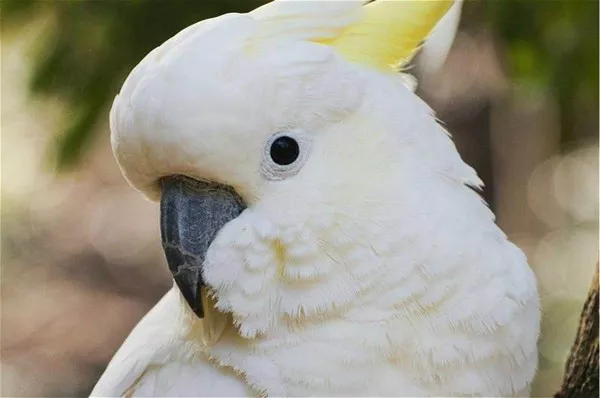Curious avian enthusiasts often find themselves pondering the question, “What do Indian Ringnecks eat?” These vibrant and intelligent parrots, scientifically known as Psittacula krameri, hail from the Indian subcontinent and have become increasingly popular as pets around the globe. Understanding their dietary needs is crucial for ensuring their health, vitality, and overall well-being.
The Natural Diet of Indian Ringnecks
In their native habitat, Indian Ringnecks primarily consume a diverse range of foods. Their natural diet includes an assortment of fruits, vegetables, seeds, and even the occasional flower. Understanding what constitutes their natural diet provides valuable insights for creating a balanced and nutritious menu for these feathered companions.
Seeds: A Staple in their Diet
What do Indian Ringnecks eat in the wild? Seeds are a staple in their diet, with a preference for a variety of seeds such as sunflower, safflower, and millet. However, it’s essential to recognize that a seed-only diet can lead to nutritional deficiencies, as seeds lack certain essential nutrients crucial for their well-being.
The Importance of Pellets in Captivity
In captivity, replicating the diversity of their natural diet can be challenging. This is where specially formulated pellets play a crucial role. Pellets are nutritionally balanced and ensure that Indian Ringnecks receive the essential vitamins and minerals they need for optimal health. Including high-quality pellets in their daily diet can contribute significantly to their overall well-being.
Balancing the Fruit Equation
What do Indian Ringnecks eat in terms of fruits? These colorful parrots enjoy a variety of fruits such as apples, pears, grapes, and berries. Fruits not only add flavor to their diet but also provide essential vitamins and antioxidants. However, moderation is key, as excessive fruit consumption can lead to an imbalance in their nutritional intake.
Vegetables: A Crucial Component
Vegetables play a vital role in meeting the dietary needs of Indian Ringnecks. Leafy greens like spinach, kale, and Swiss chard are rich in essential nutrients, while carrots and bell peppers offer a colorful and nutritious addition to their meals. Understanding the variety of vegetables that can be included ensures a well-rounded and enjoyable diet for these parrots.
The Protein Puzzle: Addressing the Need for Protein
Protein is a crucial component of an Indian Ringneck’s diet, supporting muscle development and overall health. Incorporating protein sources such as cooked eggs, legumes, and small amounts of lean meats can help fulfill their protein requirements. Striking the right balance is essential, as excessive protein intake can lead to health issues.
Navigating Nutritional Challenges in Captivity
In captivity, Indian Ringnecks may face nutritional challenges due to a limited diet. Owners must be vigilant in providing a diverse and nutritious menu to prevent deficiencies. Consulting with avian veterinarians can help formulate a customized diet plan tailored to the specific needs of individual birds, addressing any potential nutritional gaps.
Hydration Matters: The Role of Water in their Diet
What do Indian Ringnecks drink? While it may seem obvious, ensuring an adequate supply of fresh and clean water is paramount for their well-being. Hydration supports digestion, regulates body temperature, and plays a crucial role in overall health. Regularly changing the water and providing multiple water sources within the cage encourages proper hydration.
Avoiding Harmful Foods: A Cautionary Note
Understanding what Indian Ringnecks should not eat is as important as knowing what they should. Foods high in fat, salt, and sugar should be avoided, as they can lead to obesity and other health issues. Additionally, toxic foods such as chocolate, caffeine, and certain plants should be kept far from their reach.
The Joy of Foraging: Stimulating Mental and Physical Health
In the wild, Indian Ringnecks spend a significant amount of time foraging for food. Recreating this natural behavior in captivity is not only enjoyable for these intelligent birds but also provides mental and physical stimulation. Introducing foraging toys and hiding treats within their environment encourages natural behaviors and keeps them mentally engaged.
Conclusion: Nourishing the Colorful Companions
In conclusion, understanding what Indian Ringnecks eat is a fundamental aspect of responsible pet ownership. A well-balanced diet that replicates their natural preferences ensures these vibrant parrots lead healthy and happy lives. From seeds and pellets to a rainbow of fruits and vegetables, providing a diverse and nutritious menu contributes to the overall well-being of these intelligent and charming feathered companions.
As caretakers, it is our responsibility to unlock the culinary secrets that contribute to the longevity and vitality of our Indian Ringnecks.
Related Topics:
How Much Does a Blue Indian Ringneck Parrot Cost? – Full Guide
Best Vegetables for Indian Ringnecks Parrots
Can Indian Ringnecks Eat Bananas? (Answered)

























